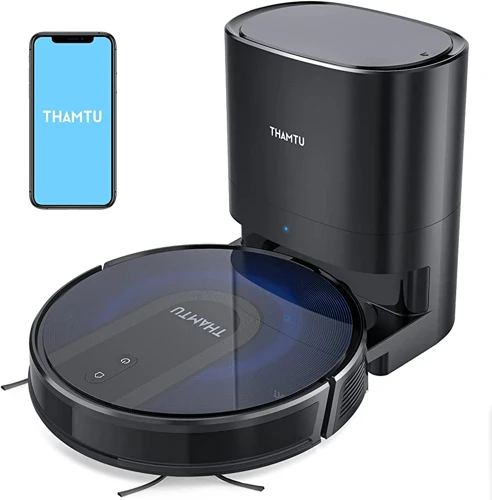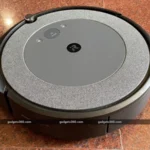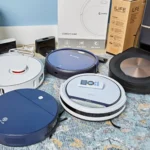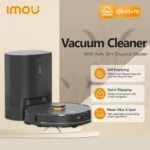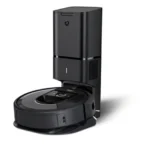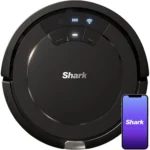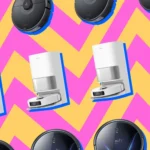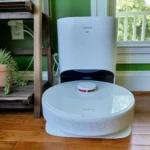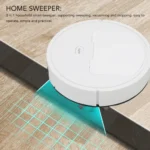Vacuum cleaners have come a long way from the traditional manual push models, with the emergence of automatic dirt disposal robotic vacuum cleaners revolutionizing the cleaning industry. One important factor that determines the effectiveness of these vacuum cleaners is their suction power. However, there is a growing concern about whether too much suction power can be detrimental to the performance and lifespan of the vacuum cleaner. In this article, we will explore the parameters of suction power in vacuum cleaners, the advantages and drawbacks of high suction power, and the optimal suction power for automatic dirt disposal vacuum cleaners. So, let’s dive in and discover if too much suction power is indeed detrimental for these revolutionary cleaning machines.
The Parameters of Suction Power in Vacuum Cleaners
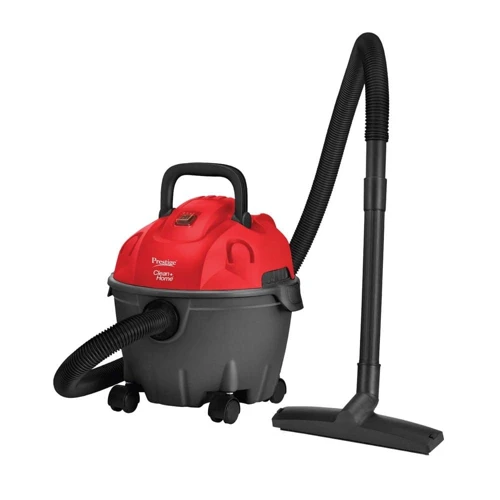
The effectiveness of a vacuum cleaner in removing dirt and debris from floors and surfaces is largely dependent on its suction power. Various factors, such as static pressure, airflow, and suction power, make up the parameters of suction power in vacuum cleaners. Understanding these parameters is crucial to achieving optimal cleaning results with automatic dirt disposal vacuum cleaners. In this section, we’ll take an in-depth look at these parameters and how they affect the performance of such vacuums. To learn more about smart navigation for automatic dirt disposal vacuums, check out our article on Smart Navigation for Automatic Dirt Disposal Vacuum Cleaners.
What is a Vacuum’s Static Pressure?
A vacuum cleaner’s suction power is dependent on two main factors: static pressure and airflow. In this section, we’ll discuss static pressure and its significance in the cleaning process.
Static Pressure is the force per unit area exerted on the surface by a fluid. In a vacuum cleaner, it is the pressure difference between the inner space of the vacuum cleaner and the space outside the cleaner. The static pressure in a vacuum cleaner is created by the motor which pumps the air through the vacuum cleaner’s nozzle and dustbin. A vacuum’s static pressure is measured in inches of waterlift or Pascals (Pa).
The higher the static pressure, the more forceful the suction will be, which leads to better cleaning efficiency. Bagless vacuums tend to have higher static pressure than bagged vacuums. If your vacuum cleaner has too low static pressure, it won’t lift enough dirt, which will leave your floors and carpets unclean.
However, it is important to note that high static pressure alone will not guarantee exceptional cleaning results. A high volume of air is also needed for efficient cleaning. For instance, a vacuum with a high static pressure but low airflow will struggle to pick up larger dirt particles. This is why it is essential to also consider airflow when assessing the effectiveness of a vacuum cleaner.
Static pressure is a crucial factor for an effective vacuum cleaner, and it is used along with airflow to determine suction power. A vacuum with high suction power can provide better cleaning results, including deeper cleaning action and efficient removal of debris. Do you want to know whether bagged or bagless automatic dirt disposal vacuum cleaner is better? Read our article about Bagged vs Bagless Automatic Dirt Disposal.
What is a Vacuum’s Airflow?
Airflow refers to the amount of air the vacuum can move through the nozzle, which is measured in cubic feet per minute (CFM). A vacuum cleaner with higher CFM has more powerful suction that can pick up dirt and debris from your floors more effectively. The more air a vacuum can move, the easier it can pick up dirt and dust particles, and larger debris like pet hair, food crumbs, and dirt.
To measure airflow, a vacuum cleaner first creates a low-pressure area within the vacuum’s hose or nozzle. This pressure difference then causes air from outside the nozzle to flow into the nozzle, and through the vacuum cleaner. The volume of air that moves through the nozzle, and the amount of resistance that the vacuum cleaner creates, determines the vacuum’s CFM.
Higher airflow, however, doesn’t always mean better cleaning capabilities. The suction power and airflow must work in harmony with each other to provide the best suction results. Too much airflow can cause some debris to lift up off the floor but to fly away from the it due to the suction’s pull. A vacuum with balanced parameters of both airflow and suction power produces the best results when picking up dirt and debris from your carpet or hard surfaces.
| Brand/Model | Airflow (CFM) |
|---|---|
| Shark Apex Uplight | 64 |
| Dyson Cyclone V10 | 54 |
| iRobot Roomba i7 | 20.71 |
| Hoover WindTunnel 3 | 175 |
Different brands and models have different airflow ratings, depending on the type of vacuum cleaner and intended use. The Shark Apex Uplight, for example, has a CFM of 64, whereas the Dyson Cyclone V10 has a CFM of 54. Robot vacuums such as the iRobot Roomba i7 usually have lower CFM ratings, around 20.71, as these vacuums prioritize portability over high suction power. The Hoover WindTunnel 3, on the other hand, has a very high CFM rating of 175.
It’s vital to consider the airflow of your automatic dirt disposal vacuum cleaner, especially if you have carpets or pets that shed. Too little airflow will make it hard to pick up debris, and too much airflow could cause dirt and debris to scatter around your house. It’s essential to find a balance between a vacuum’s static pressure and airflow, based on your household’s specific needs.
What is a Vacuum’s Suction Power?
Suction power is one of the most important factors to consider when purchasing a vacuum cleaner. It refers to the strength of the vacuum’s suction, which determines how well it can pick up dirt and debris. The suction power of a vacuum cleaner is measured in Watts and is determined by two parameters: static pressure and airflow.
- Static pressure: This refers to the force that the vacuum cleaner exerts to pull dirt and debris into the vacuum’s hose and bag. A vacuum cleaner with high static pressure can pull dirt and debris from deep within carpets and upholstery.
- Airflow: This is the amount of air that is sucked into the vacuum cleaner and is measured in cubic feet per minute (CFM). It determines how quickly the dirt and debris are transported through the vacuum’s hose and into the bag or canister.
The suction power of a vacuum cleaner is a balance between these two parameters. A vacuum cleaner with high static pressure and low airflow will not pick up dirt and debris efficiently, as the dirt and debris will move slowly through the hose. On the other hand, a vacuum cleaner with low static pressure and high airflow will not be able to pull dirt and debris from deep within carpets and upholstery.
When it comes to automatic dirt disposal vacuum cleaners, high suction power is advantageous for several reasons. However, it is important to note that too much suction power can have some drawbacks as well.
The Advantages of High Suction Power in an Automatic Dirt Disposal Vacuum Cleaner
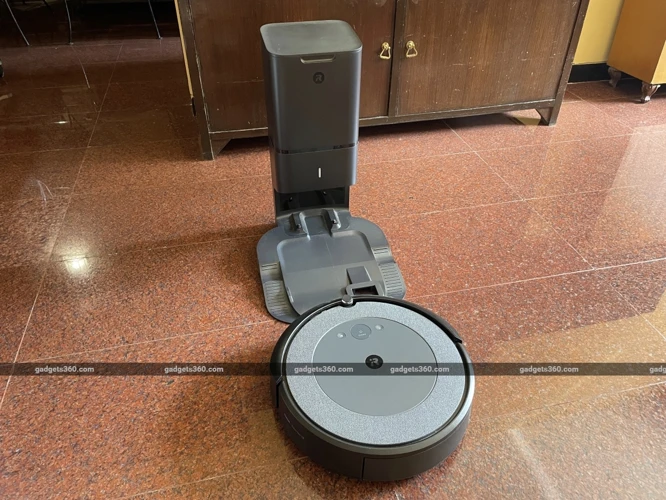
It’s no secret that a vacuum cleaner’s suction power is the main determinant of its effectiveness in cleaning. And when it comes to automatic dirt disposal vacuum cleaners, high suction power can provide numerous benefits that will ensure a cleaner home. With powerful suction ability, this type of vacuum cleaner can surpass the cleaning standards, leaving carpets and other floor types dirt-free. Here, we’ll take a closer look at the advantages of high suction power in an automatic dirt disposal vacuum cleaner, so you can get a better idea of how it can help you maintain a spotless home.
Better Carpets and Deeper Cleaning Action
When it comes to automatic dirt disposal vacuum cleaners, one of the main advantages of high suction power is the ability to achieve better carpets and deeper cleaning action. This means that your carpets will be more thoroughly cleaned, leaving no dirt or debris behind.
A vacuum cleaner with sufficient suction power will be able to lift dirt and debris from deep within carpet fibers, ensuring a more thorough clean. This is especially important if you have pets or if someone in your household suffers from allergies, as it can help to remove dust and allergens that can get trapped in carpets.
A vacuum cleaner with high suction power is beneficial for homes with high-traffic areas because it can remove dirt and debris that can accumulate more easily. This can lead to a cleaner-looking carpet and give your home an overall more polished appearance.
Having a vacuum cleaner with high suction power can result in fewer passes across your carpets, which can save you valuable time and energy. It can also reduce the need for heavy-duty carpet cleaning in the long run, helping to extend the lifespan of your carpets.
Better carpets and deeper cleaning action are significant advantages of an automatic dirt disposal vacuum cleaner with high suction power. Whether you have pets, allergies or simply want to keep your carpets looking their best, a vacuum cleaner with high suction power can help to achieve a more thorough and efficient cleaning process.
Efficient Removal of Debris
When it comes to cleaning, the primary objective is always to leave the area free from dirt and debris. Efficient removal of debris is not only important for aesthetic purposes, but also for the health and safety of those in the environment. Automatic dirt disposal vacuum cleaners are designed to enhance cleaning efficiency, particularly with regard to debris removal.
One significant advantage of the high suction power in automatic dirt disposal vacuums is the impressive rate at which they can collect debris. The vacuum’s motor is responsible for creating the suction power that pulls in dirt, dust, and other debris. The airflow inside the vacuum cleaner then carries this debris into the dirt bin.
A vacuum with too little suction power will not remove debris thoroughly, which will result in having to vacuum the same area many times. This is not only a waste of time but also makes the cleaning process exhausting. However, with an automatic dirt disposal vacuum cleaner’s high suction power, the collection of debris is efficient and thorough.
To provide an illustrative example, take a look at the table below, which shows how varying suction power can affect the debris removal performance of a vacuum cleaner:
| Suction Power | Debris Removal Efficiency |
|---|---|
| Low | Poor |
| Medium | Fair |
| High | Excellent |
As shown in this table, the higher the suction power, the more efficient the vacuum cleaner is at removing debris. This can save time and effort while providing a deeper clean.
High suction power in automatic dirt disposal vacuum cleaners leads to efficient debris removal – an advantage that can save time and effort during cleaning.
Faster Cleaning Process and Fewer Passes
Having a vacuum cleaner with high suction power provides a faster cleaning process and requires fewer passes. This is because with powerful suction, the vacuum can remove more dirt and debris in one pass. Having fewer passes to cover a particular area means less energy and time are required to clean the same surface area.
However, with too much suction power, the vacuum cleaner may end up removing more than just dirt and debris. It may also remove necessary fibers from your carpets, which can lead to a shorter lifespan of your carpet. The high suction power may also be too strong for delicate furniture leaving scratches or damage.
It is crucial to consider the type of surface being cleaned and adjust the suction according to the cleaning needs. A vacuum cleaner that offers adjustable suction power would be a great benefit in achieving the ideal balance between powerful cleaning and surface protection.
By finding the optimal suction power, you’ll not only get a faster cleaning process and fewer passes, but also a cleaned surface without any damage. A perfect solution would be to have a vacuum cleaner with a smart technology that can automatically adjust its suction power to the specific cleaning situation.
To learn more about the benefits of a wifi-enabled smart vacuum cleaner with automatic dirt disposal, check out this article. To consider the acceptable noise levels in automatic dirt disposal vacuum cleaners, read our in-depth discussion here. Finally, for learning how to select the right vacuum cleaner according to square feet and auto-empty feature, visit our guide here.
The Possible Drawbacks of Too Much Suction Power in an Automatic Dirt Disposal Vacuum Cleaner

As counterintuitive as it might seem, too much suction power in an automatic dirt disposal vacuum cleaner could actually do more harm than good. While high suction power is undeniably useful for cleaning carpets and removing debris, there are several possible drawbacks that you need to keep in mind before turning up the dial. From increased noise levels to reduced lifespan of the motor and vacuum filters, there are real risks associated with excessive suction power. So, before you rev up your vacuum cleaner to the max, it’s crucial to understand these potential drawbacks and how to avoid them.
Increased Noise Levels
When it comes to powerful automatic dirt disposal vacuum cleaners, one of the potential drawbacks is increased noise levels. The strong suction power of the vacuum motor can generate a lot of noise, which can be a problem for those who are sensitive to loud sounds or need to use the vacuum in environments where noise levels need to be kept to a minimum.
An automatic dirt disposal vacuum cleaner with too much suction power may produce noise over 70 dB. To put that in perspective, a regular conversation usually ranges between 60-65 dB, while a lawnmower produces around 90 dB.
| Decibels (dB) | Noise source |
|---|---|
| 70 | Automatic dirt disposal vacuum cleaner with high suction power |
| 60-65 | Regular conversation |
| 90 | Lawnmower |
But the noise generated by the vacuum cleaner is not just an issue of annoyance or discomfort. Long exposure to loud noise levels can also lead to hearing damage, such as tinnitus or hearing loss. If you live in an apartment or have neighbors who are disturbed by the noise, a vacuum cleaner with too much suction power can cause never-ending conflicts.
To prevent increased noise levels from being a problem, manufacturers are designing automatic dirt disposal vacuum cleaners that have noise-reducing features. Besides the proper choice of motor and fan, such vacuums can have additional sound insulation that prevents sound waves from escaping the device. If you are sensitive to loud noises or have the need to use a vacuum cleaner in a quiet environment, it is essential to look for models that have low-noise operation features. The sound levels can vary depending on the brand, so be sure to check the product specifications before making a purchase.
Reduced Lifespan of the Motor and Vacuum Filters
When it comes to automatic dirt disposal vacuum cleaners, too much suction power can lead to a reduced lifespan of the motor and vacuum filters. This is something that every homeowner needs to keep in mind while choosing the right vacuum cleaner for their home cleaning needs. Here are some of the possible reasons why high suction power can put a strain on your vacuum’s motor and filters:
- Clogging of Filters: High suction power can cause a vacuum to clog more frequently, leading to reduced airflow and suction. As a result, the motor has to work harder to maintain the same level of suction power, leading to overheating and reduced lifespan of the motor. Clogged vacuum filters reduce suction power, leading to less effective cleaning performance.
- Overheating: Automatic dirt disposal vacuum cleaners that have too much suction power can easily overheat due to the excessive strain placed on the motor. This can not only reduce the lifespan of the motor but also pose a potential fire hazard if the vacuum cleaner is not shut off timely.
- Motor Damage: Using a vacuum cleaner with too much suction power can cause significant wear and tear on the motor’s blades and bearings, leading to irreversible damage. This damage can lead to reduced suction power, strange noises, and an overall decline in the vacuum’s cleaning capabilities.
- Damaged Vacuum Filters: High suction power can cause the fibers of HEPA filters, which are designed to catch small particles, to break apart, leading to decreased effectiveness and reduced filtering capabilities. When these filters break, they can also release dust and allergens back into the air, creating potential health hazards for the homeowner.
While high suction power may be tempting to choose for an automatic dirt disposal vacuum cleaner, it is important to consider the potential drawbacks. A decrease in the vacuum cleaner’s lifespan and filtering capabilities, along with the possibility of overheating and risking the potential fire hazard, can outweigh the benefits of deep cleaning.
Damage to Carpets and Furniture
It is important to take into consideration the possible damage that may occur to your carpets and furniture due to excessive suction power in automatic dirt disposal vacuum cleaners. While high suction power can provide a deeper cleaning action, it may also damage the surfaces being cleaned.
Carpets: If your vacuum cleaner has too much suction power, it may damage your carpets by pulling out fibers, causing them to fray or even tear. This can lead to an unsightly appearance and in severe cases, may require the replacement of the carpet altogether. Additionally, high suction power may cause the vacuum cleaner to pull up the underlying padding or damage the backing of the carpet.
Furniture: Similar to carpets, high suction power can also damage furniture by pulling off loose fabric or damaging the upholstery. It may also cause dents or scratches on wooden surfaces. It is important to use the correct suction power setting for each type of furniture based on their durability and material.
It is essential that you avoid using excessive suction power on delicate surfaces or materials. To minimize damage to your carpets and furniture, consider selecting the appropriate suction power setting based on the surface being cleaned. Some vacuum cleaners have adjustable suction power controls, which can be used to manually adjust the suction based on the surface being cleaned. This will ensure that each surface is cleaned thoroughly but without causing any damage.
Too much suction power in automatic dirt disposal vacuum cleaners can lead to unwanted damage to carpets and furniture. To prevent damage, it is important to select the appropriate suction power setting for the specific surface being cleaned. Refer to the manufacturer’s instructions for guidance on the appropriate suction power settings for different surfaces.
Optimal Suction Power for Automatic Dirt Disposal Vacuum Cleaners
Determining the ideal suction power for your automatic dirt disposal vacuum cleaner can be a perplexing task. It involves understanding the intricate balance between a vacuum’s static pressure and airflow, as well as how these factors relate to your specific cleaning needs. Finding the perfect suction power requires some experimentation and a bit of trial and error. However, by following some general guidelines and taking into account various factors such as flooring type, dirt levels, pets, and allergies, you can optimize your vacuum’s suction power for maximum cleaning efficiency and avoid potential drawbacks. Let’s explore some of the key considerations for achieving optimal suction power.
The Ideal Ratio Between Static Pressure and Airflow
The ideal ratio between static pressure and airflow is crucial for ensuring efficient cleaning and preventing any potential damage to your carpets or furniture. To strike the right balance, manufacturers must consider factors such as the motor’s power and the vacuum’s design.
Factors to Consider
- Motor Power- A motor with high power can generate more static pressure, allowing for deeper suction. However, such motors often require higher wattage, leading to increased energy consumption.
- Vacuum Design- The vacuum’s design can affect the balance between static pressure and airflow. For instance, a vacuum designed for deep cleaning must have a high static pressure to remove embedded dirt, while a vacuum capable of picking up large debris requires high airflow to prevent blockages.
Consequences of Imbalanced Ratios
- If the static pressure surpasses the airflow, the vacuum cleaner may cause damage to carpets or furniture by pulling too hard on the fibers or pulling pieces loose.
- If the airflow exceeds the static pressure, it may not be able to pick up dirt and debris effectively, which can be especially problematic for those with allergies or in households with pets.
The Importance of Finding the Right Balance
Achieving an optimal balance between static pressure and airflow ensures that you get the best cleaning results without causing any damage to your carpets, furniture, or the vacuum itself. Manufacturers put in months of data analysis and consumer feedback to optimize this balance to ensure that consumers can trust their products.
Tips for Finding the Ideal Ratio
- Consult the manufacturer’s specifications to determine the ideal ratio between static pressure and airflow for your vacuum cleaner.
- Test your vacuum on a small section of your carpet and inspect its effect on the fibers for any irregularities, such as fuzziness or fraying.
- Check the airflow of your vacuum regularly to prevent clogs and keep your suction power at its full potential.
By keeping these tips in mind, you’ll not only improve your vacuum’s cleaning efficiency, but also extend its lifespan and prevent any unnecessary damage. Finding the ideal balance between static pressure and airflow is key to ensuring that your automatic dirt disposal vacuum cleaner maintains optimal cleaning efficiency for years to come.
Matching Suction Power with the Type of Flooring and Dirt Level
When it comes to automatic dirt disposal vacuum cleaners, it’s essential to match the suction power with the type of flooring and dirt level for optimal cleaning results. This is because different floor types and levels of dirt require varying levels of suction power to achieve a deep clean without causing damage to carpets or other surfaces. Here is a comprehensive guide on how to match suction power with different types of flooring and dirt levels, based on expert recommendations:
| Types of Floors | Recommended Suction Power | Best Vacuum Cleaner Models |
|---|---|---|
| Hard Floors | 250-400 watts | Shark IQ Robot, iRobot Roomba i7+ |
| Low Pile Carpets | 400-600 watts | Eufy RoboVac 11S, Roborock S5 Max |
| High Pile Carpets | 600-800 watts | iRobot Roomba s9+, Dyson V11 |
As the table above shows, hard floors typically require less suction power compared to low and high pile carpets. This is because high suction power can cause damage to hard floors, such as scratching or scuffing. On the other hand, low pile carpets can tolerate moderate suction power, but high pile carpets require more suction power to penetrate deeply into the fibers for a thorough clean.
In addition to flooring type, the level of dirt in the home also plays a role in determining the ideal suction power level. For example, a home with heavy pet hair or debris will require higher suction power compared to a home with light dust and dirt.
Matching the suction power with the type of flooring and level of dirt is essential for achieving optimal cleaning results while prolonging the life of your vacuum cleaner. It’s recommended to consult the manufacturer’s instructions and guidelines for your specific vacuum model to ensure you’re using the correct suction power for each cleaning task.
Adjusting Suction Power for Pets and Allergies
Pets and allergies are two factors that can drastically affect the level of suction power required for optimal cleaning with an automatic dirt disposal vacuum cleaner. However, it’s important to note that simply cranking up the suction power to the maximum level may not necessarily be the best solution.
Pets: When dealing with pet hair and dander, high suction power is essential to efficiently remove all dirt and debris from carpets, upholstery, and other surfaces. However, too much suction power can also lead to the tangling of pet hair in the brushes or inside the vacuum’s filter system, resulting in clogs, reduced suction, and damage to the motor.
Allergies: Those with allergies may benefit from a lower suction power, as high levels of suction can stir up dust and allergens, sending them airborne and exacerbating symptoms. However, a lower suction power may not be as effective in removing embedded dirt and debris from carpets and upholstery.
So, how can you adjust the suction power of your automatic dirt disposal vacuum cleaner to best suit pets and allergies? Here are some tips:
| Factor | Adjustment |
|---|---|
| Pets | Use the highest suction power that doesn’t cause tangling or clogs. A brush roll control, which can turn off the roller or adjust its speed, might also be helpful for dealing with pet hair. |
| Allergies | Use a lower suction power and consider using a HEPA filter to capture allergens. Vacuum at least twice a week and consider adding an air purifier to the room. |
By making some adjustments to the suction power of your automatic dirt disposal vacuum cleaner, you can keep your home clean and comfortable for both pets and allergy sufferers. Experiment with different levels of suction and observe how your pets and allergies respond, and don’t be afraid to consult the vacuum’s manual or a professional for guidance.
Conclusion
In conclusion, the ideal suction power for an automatic dirt disposal vacuum cleaner ultimately depends on various factors such as the type of flooring, the level of dirt, and the presence of pets or allergies. While higher suction power can provide better cleaning results, it can also lead to increased noise levels, reduced motor and filter lifespan, and even damage to carpets and furniture.
Therefore, it’s essential to find the right balance between static pressure and airflow to optimize suction power. Additionally, adjusting the power according to the type of flooring and dirt level can further enhance the cleaning results while minimizing the possible drawbacks.
Lastly, it’s important to consider personal factors such as the presence of pets or allergies when determining the appropriate suction power. Overall, choosing the optimal suction power for an automatic dirt disposal vacuum cleaner can lead to better cleaning results, faster cleaning times, and a longer lifespan for the vacuum itself.
Frequently Asked Questions
1. Can too much suction power damage my carpets?
Yes, if the suction power is too strong, it can damage the pile or even pull threads loose. It is important to adjust the suction power to meet the needs of your carpet.
2. Is a vacuum with high suction power always better?
Not necessarily. While high suction power may be beneficial for some cleaning tasks, it can also create noise, wear out the motor and vacuum filters prematurely, and cause damage to carpets and furniture.
3. Will a vacuum with automatic dirt disposal perform better with higher suction power?
Generally, yes. Automatic dirt disposal vacuum cleaners are designed to handle larger volumes of debris, and higher suction power can help them work more efficiently.
4. What does static pressure mean in a vacuum cleaner?
Static pressure is the measure of the force exerted per unit area by the air molecules in a vacuum cleaner. It is the component of suction power responsible for lifting dirt and debris.
5. Can high vacuum suction power clean better than scrubbing stains?
While high suction power is beneficial for removing dirt, it may not be effective for scrubbing stains. It is best to first scrub stubborn stains before using the vacuum for complete cleaning.
6. How can I tell if my vacuum has too much suction power?
If your vacuum makes excessive noise or causes the carpet fibers to look frayed or damaged, then it may have too much suction power.
7. Can high suction power actually make a vacuum less efficient?
Yes. If the suction power is too high, the vacuum may struggle to move across the carpet, causing it to take longer to clean a given area. This can reduce overall cleaning efficiency.
8. Can adjusting the suction power of my vacuum save me money on repairs?
Yes. By reducing suction power to a level that is appropriate for your specific cleaning needs, it can help extend the lifespan of your vacuum’s motor and filters, resulting in less frequent and costly repairs.
9. Can the level of suction power of a vacuum be adjusted?
Yes. Most modern vacuum cleaners allow for the adjustment of suction power through various settings, switches, or dials on the device.
10. How do I determine the optimal suction power for my vacuum?
The optimal suction power for your vacuum will depend on a variety of factors, including the type of flooring, the level of dirt or debris, and the presence of pets or allergies in your home. It is best to refer to the manufacturer’s recommendations and make adjustments as needed based on your personal preferences and cleaning habits.
